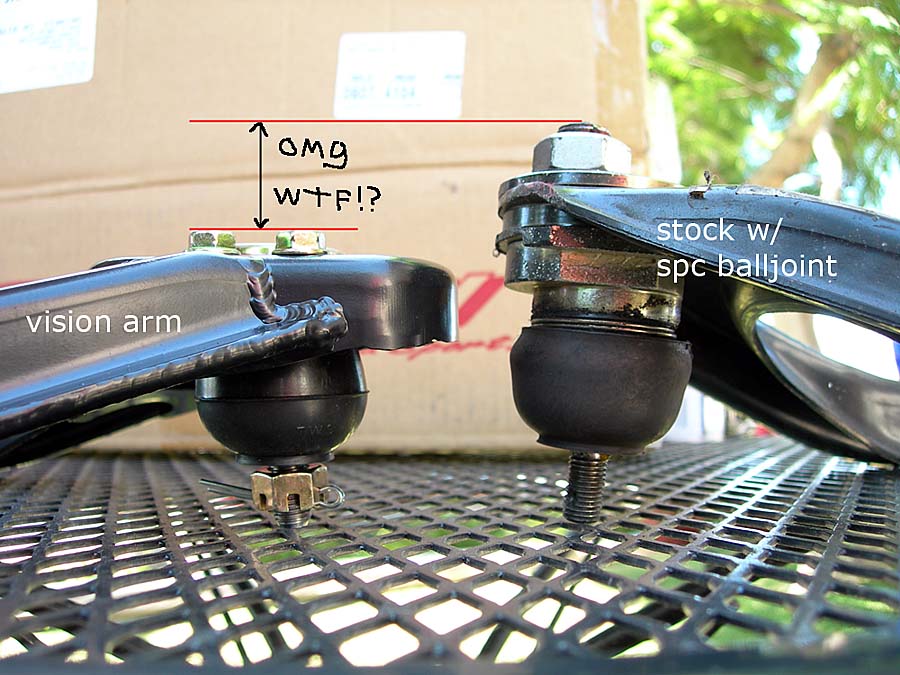Originally posted by sonikaccord
View Post
Moving the whole wishbone in or out on slotted holes (but not changing the location of the centre of the pivoting bushes) will result in A) camber change, B) KPI change, and C) effective changing of the wishbone length. All of these things will have some differing dynamic affects, but B and C will IMO be of no great concern for a road car (something you live with or ignore for the sake of adjusting the static camber).
If you mean making a wishbone where the ball joint itself is mounted in slots in the wishbone, then I think this would replicate at least one of the aftermarket adjustable wishbones, assuming what I've seen photos of is for a CB7 (and other models with more or less the same suspension), and not some other Honda.
It would be possible to make custom tubular wishbones with slots at the chassis mount, but I'm not sure it would be any better than a modified (i.e. slotted) stock wishbone, the same limitations more or less would apply.
There is no need to go overboard with fancy fabrication for the upper wishbones (e.g. tubular construction), they are subject to relatively low loadings so great strength / rigidity is not really needed. This low loading is a product of the distance from the contact patch to the lower ball joint relative to the distance of the upper ball joint to the lower ball joint, i.e. the 'load' is at the contact patch, the 'fulcrum' is at the lower ball joint, and the 'resistance' to the load is at the end of a long 'bar' that is the length of the distance from lower to upper ball joint (which is a lot longer than the distance from the contact patch to the lower ball joint). As such the leverage works for the upper wishbone not against it and loadings on it are relatively low.
This is why upper ball joints typically last so long compared to lower ball joints despite the upper ball joints being quite small relative to the lower ball joints, (I need to replace an upper ball joint now, it's only died a few days ago and I'm fairly sure it's the original with 360,000km on it).




 I say you do a diy on the johnl method of camber adjustment.
I say you do a diy on the johnl method of camber adjustment.


Comment